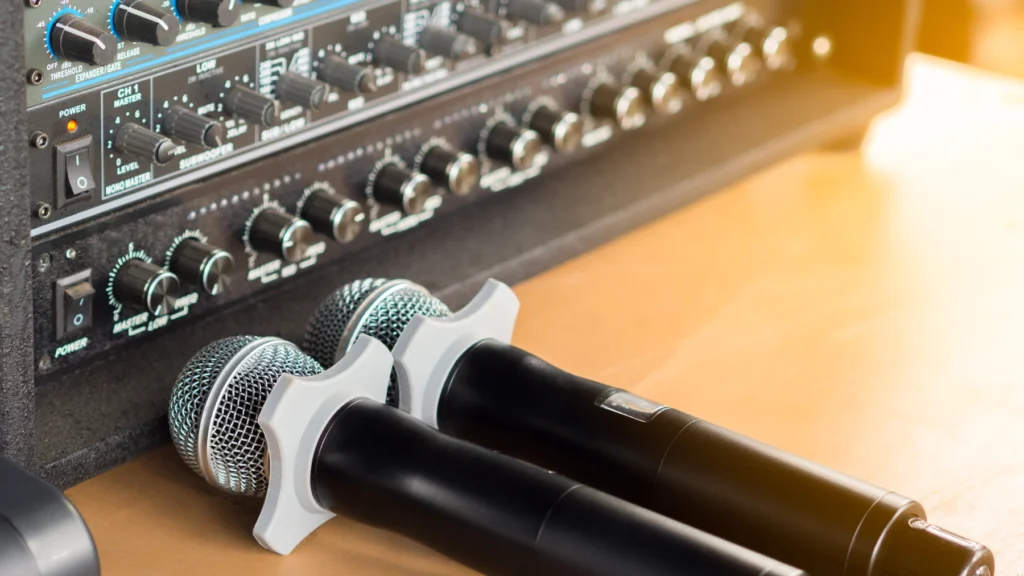
Businesses across the Southeast are asking the same question: “How much does a commercial sound system installation actually cost, and what should I be thinking about before we upgrade?”
The answer depends on your space, your goals, and the partner you choose to design and install the system. This article will guide you through the key factors that influence cost and demonstrate how to make a smart investment that balances performance, budget, and future growth.
Today’s systems are more intelligent, more scalable, and often network-connected. They’re designed to make sound clearer, more focused, and easier to manage across different spaces and use cases.
Here’s what typically goes into a modern commercial sound system:
Even for a modest-sized conference room, the proper setup isn’t “plug-and-play.” It’s designed and installed for real-world use.
Whether you’re outfitting one room or ten, the final cost of your setup depends on several key factors. Below, we break down the four most important cost drivers so you can budget smartly and avoid surprises.
A small, carpeted huddle room will naturally cost less to outfit than a large boardroom with glass walls and a vaulted ceiling.
Larger or oddly shaped rooms need more microphones, speakers, and acoustic calibration to avoid dead spots, echo, or muffled sound. If your space features a lot of glass, concrete, or other reflective surfaces, you may also require DSP tuning or acoustic treatments to maintain clarity.
CGS Tip: If the room wasn’t originally designed for meetings, the right integrator can help you work with (not against) your room’s natural acoustics.
If you need basic background music or paging, that’s the low end. If you need to host remote meetings, training sessions, or hybrid town halls, you'll now require microphones, speaker zoning, integration with Zoom/Teams, and potentially voice lift systems.
Managing multiple rooms from a central control panel? You’re entering multi-zone, AV-over-IP territory. The more interactive and multi-functional the room, the more your system needs to adapt. That’s where design becomes critical.
High-end brands like Shure, Biamp, QSC, and JBL Professional offer better audio fidelity, extended warranties, and more robust support ecosystems. That means fewer replacements, fewer issues, and less downtime.
Yes, you could opt for more affordable gear. However, in our experience, cutting corners here typically results in higher security camera maintenance costs and increased user frustration in the long run.
Labor costs vary based on the complexity of the install (new construction vs retrofit), cabling and routing through finished ceilings or walls, programming for DSPs or control systems, and integration with your existing IT or AV infrastructure.
If your building has unique constraints (such as historic status, concrete walls, or limited access), your commercial sound system installation may require special coordination.
Networking: Audio-over-IP requires network configuration and switch provisioning.
One quick note: Online pricing calculators rarely reflect the actual costs you'll incur and often overlook key line items, such as labor, integration, or post-installation tuning. The most accurate way to obtain a number is through a walkthrough and a brief conversation with your AV partner.
If you’re working with a tight budget or presenting costs to leadership, here are smart ways to make every dollar count:
If you already have quality speakers, existing conduit, or cable runs from a previous system, a good integrator will tell you what can be reused.
At CGS, we regularly help clients upgrade strategically, replacing only what’s outdated or underperforming, and integrating the rest into a modern system.
Start with what makes the most significant difference, such as microphone coverage, speaker clarity, positioning, and echo/feedback reduction. Once that’s solid, you can build from there.
If you’re managing a growing facility or planning for long-term upgrades, consider a phased rollout. Many of our clients start with the boardroom or primary meeting space, then expand to huddle rooms and training areas later, all while using a consistent, scalable system design.
This not only spreads out the budget but also gives your team time to become comfortable with the technology.
Even if you're only equipping one room, we may suggest using AV-over-IP infrastructure to allow you to easily expand to additional rooms down the road. Likewise, choosing modular control systems or centralized audio processors can save you significant costs when your team or tech stack grows.
Bottom line: A trusted AV partner will help you think two steps ahead without pushing unnecessary gear.
The best sound system in the world won’t help you if it’s installed poorly, tuned incorrectly, or too complicated for your team to use. That’s why the most important decision is who you choose to guide you through the process.
At Carolina Georgia Sound, we approach every project like a puzzle:
From there, we design a system that actually fits your needs.
Our team handles everything, from on-site walkthroughs to custom designs, clean installations, network integration, and post-installation training. And we’re not just there for install day. We stay committed for the long haul, providing ongoing support, maintenance, and upgrades as your needs evolve.
Book a site walkthrough or a quick consult with our team, and we’ll help you plan a sound system that’s clear, future-ready, and built to support your business.

Fill out this form to schedule a call or in-person meeting.